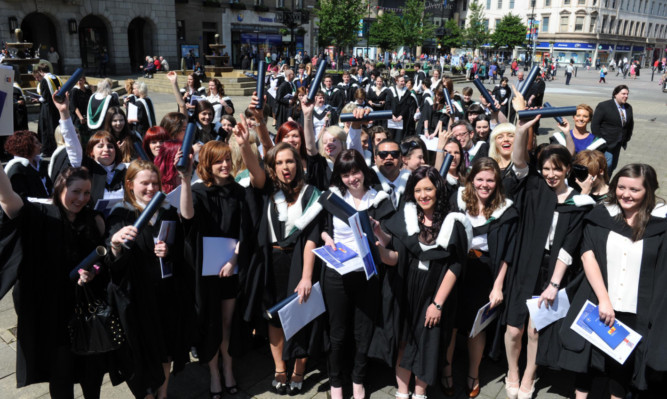The traditional Scottish university degree is becoming outdated, according to a leading figure at the country’s newest university.
The bold claim was made by James Fraser, principal and vice-chancellor at the University of the Highlands and Islands, of which Perth College is a major part.
He said Scotland’s universities must now challenge themselves to meet the needs of 21st century students in the global society.
“Today’s students may not want to study for three or four years for a degree, staying and socialising with their peers in one place,” he explained.
“They do not have to attend a university to access university degrees.
“With technology leading the globalisation of universities, students can choose to learn from home or work by a mixture of face-to-face teaching, videoconferencing or online.
“The changes in technology, economic and social change and the globalisation of education have undoubtedly opened up an adaptive space for universities to explore and, perhaps, exploit.
“Indeed, students can access university education free of charge by switching on their laptops, tablets or mobile phones.
“We have the opportunity to stretch and challenge the traditional concepts and paradigms of ‘a university’ in Scotland and beyond; to expand into that adaptive space and, in doing so, to meet the needs of learners, industry and society on not only a regional basis, but also at national and global levels.”
Perth College is one element of the UHI and though many hundreds of students study full-time on its campus, many others take advantage of the opportunity to study part-time, or through distance and online courses.
Such options open up many specialist courses to students all over the world and also to learners for whom the traditional student experience is impossible such as those in full-time employment.
The University of the Highlands and Islands has gained years of experience of delivering education in this way.
Mr Fraser’s views appear to be supported by the experience of the Open University in Scotland, which has seen an increasing number of young people choosing to study with the OU on a full-time or part-time basis.
Over the past five years, it has seen a 48% increase in students under the age of 25, as many more choose to juggle further education with workplace experience.
Despite his enthusiasm for the alternatives to traditional student life, Mr Fraser warned that, in this new world, Scottish higher education providers have to ensure the education experience they are offering is high quality and connected to the world of work so that the students can compete successfully as employees or as entrepreneurs.
“Scotland has a world-acclaimed university system; we punch well above our population weight in teaching and in research,” he said.
“Our quality is excellent and we continue to attract acceptable volumes of students.
“But Scottish universities compete in this new world of highly accessible global education, where other world-famous universities, such as Harvard and Oxford, already compete for students with iTunes U.
“We cannot simply stand still and continue to offer traditional study options to our students.
“We have to challenge the paradigm by re-examining what we do and offer our different customers not only what they need and want, but at the time they want it, and at the place they want it, and in the way they want it should that be long part-time study or shorter full-time study based on a 12-month academic year.”
